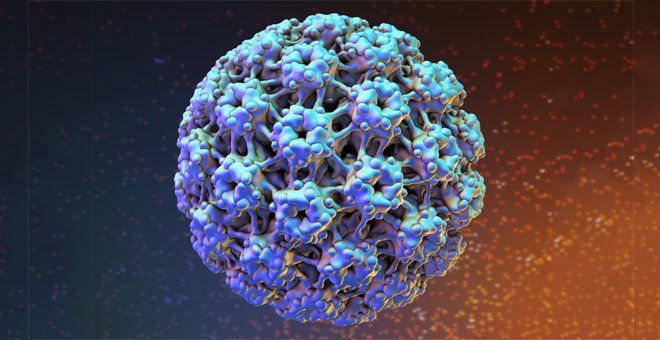- Diseases
- Acoustic Neuroma (16)
- Adrenal Gland Tumor (24)
- Anal Cancer (70)
- Anemia (2)
- Appendix Cancer (18)
- Bile Duct Cancer (26)
- Bladder Cancer (74)
- Brain Metastases (28)
- Brain Tumor (234)
- Breast Cancer (726)
- Breast Implant-Associated Anaplastic Large Cell Lymphoma (2)
- Cancer of Unknown Primary (4)
- Carcinoid Tumor (8)
- Cervical Cancer (164)
- Colon Cancer (168)
- Colorectal Cancer (118)
- Endocrine Tumor (4)
- Esophageal Cancer (44)
- Eye Cancer (36)
- Fallopian Tube Cancer (8)
- Germ Cell Tumor (4)
- Gestational Trophoblastic Disease (2)
- Head and Neck Cancer (14)
- Kidney Cancer (130)
- Leukemia (342)
- Liver Cancer (50)
- Lung Cancer (286)
- Lymphoma (278)
- Mesothelioma (14)
- Metastasis (30)
- Multiple Myeloma (100)
- Myelodysplastic Syndrome (60)
- Myeloproliferative Neoplasm (6)
- Neuroendocrine Tumors (16)
- Oral Cancer (102)
- Ovarian Cancer (178)
- Pancreatic Cancer (160)
- Parathyroid Disease (2)
- Penile Cancer (14)
- Pituitary Tumor (6)
- Prostate Cancer (150)
- Rectal Cancer (58)
- Renal Medullary Carcinoma (6)
- Salivary Gland Cancer (14)
- Sarcoma (238)
- Skin Cancer (300)
- Skull Base Tumors (56)
- Spinal Tumor (12)
- Stomach Cancer (66)
- Testicular Cancer (28)
- Throat Cancer (92)
- Thymoma (6)
- Thyroid Cancer (100)
- Tonsil Cancer (30)
- Uterine Cancer (86)
- Vaginal Cancer (18)
- Vulvar Cancer (22)
- Cancer Topic
- Adolescent and Young Adult Cancer Issues (22)
- Advance Care Planning (12)
- Biostatistics (2)
- Blood Donation (18)
- Bone Health (8)
- COVID-19 (360)
- Cancer Recurrence (120)
- Childhood Cancer Issues (120)
- Clinical Trials (628)
- Complementary Integrative Medicine (22)
- Cytogenetics (2)
- DNA Methylation (4)
- Diagnosis (238)
- Epigenetics (6)
- Fertility (62)
- Follow-up Guidelines (2)
- Health Disparities (14)
- Hereditary Cancer Syndromes (128)
- Immunology (18)
- Li-Fraumeni Syndrome (8)
- Mental Health (122)
- Molecular Diagnostics (8)
- Pain Management (62)
- Palliative Care (8)
- Pathology (10)
- Physical Therapy (18)
- Pregnancy (18)
- Prevention (936)
- Research (390)
- Second Opinion (78)
- Sexuality (16)
- Side Effects (616)
- Sleep Disorders (10)
- Stem Cell Transplantation Cellular Therapy (216)
- Support (408)
- Survivorship (328)
- Symptoms (182)
- Treatment (1788)
6 pap smear questions, answered
4 minute read | Published November 19, 2024
Medically Reviewed | Last reviewed by Kathleen Schmeler, M.D., on November 19, 2024
It's a procedure that goes by many names: Pap smear, Papanicolaou test, Pap test, cytology or simply a ‘Pap.’
At MD Anderson, we refer to it as a Pap test, but whatever you call it, you may have questions about this procedure, who needs it and what to expect at your appointment.
I’m answering those questions here and sharing some exciting news about how Pap tests may be changing in the near future.
What does a Pap test look for?
Pap tests are used to screen people with a cervix for abnormal cells in the cervix caused by an HPV infection. These abnormal cells can be a sign of a precancerous condition called cervical dysplasia.
What happens at a Pap test appointment?
At your Pap test appointment, you will first undergo a pelvic exam. Your provider will place a tool called a speculum in your vagina to see the cervix. Next, they will use a small brush to collect a sample of cervical cells that can be used for both Pap and HPV tests. This process only takes a few minutes.
After your sample has been collected, it is sent to a lab to be tested. In the past, the cells that were collected were smeared on a slide and examined under a microscope – that's where the name Pap smear comes from. But today, many Pap tests are liquid-based. Cells are placed in a liquid vial before they are transferred to a slide and examined.
Your provider will look at your Pap and HPV tests and contact you with the results.
What’s the difference between a Pap test and an HPV test?
The Pap test and HPV test are often used together to screen for cervical cancer.
HPV tests screen for an infection caused by the human papillomavirus (HPV). Your result can be positive or negative.
HPV is the most common sexually transmitted infection; about 80% of women are infected at some point in their lives. Most women’s bodies clear the virus, and they never have any problems. However, sometimes the infection won’t go away on its own. When that happens, it can lead to pre-cancerous lesions that can turn into cancer if they aren’t treated.
Pap tests look for abnormal cells, or dysplasia, caused by an HPV infection. Your result can be normal or abnormal.
While HPV and Pap tests sound similar, the key difference is whether abnormal cells are found. Having the HPV infection does not mean you have dysplasia. You can have a positive HPV test, but a normal Pap test.
Pap tests may also pick up on other conditions such as yeast or trichomonas infections, but these results often need to be confirmed using another kind of test.
Right now, Pap tests and HPV tests are often used together. But cervical cancer screening guidelines are changing. Most guidelines are moving towards using HPV testing alone as it is more reliable than the Pap test.
Recently, the Food and Drug Administration (FDA) even approved HPV tests with self-collection. This testing option allows a woman to self-collect her own sample using a vaginal swab. This will likely become the preferred method for most women.
What happens if my Pap test is abnormal?
If the results of either your Pap test or HPV test are abnormal, your provider may recommend further testing. This includes:
Colposcopy: A tool called a colposcope is used to look more closely at the cervix.
Cervical biopsy: A small sample of cervical tissue is removed and examined under a microscope.
If high grade pre-cancerous cells are found during a colposcopy or cervical biopsy, your provider may recommend a loop electrosurgical excision procedure (LEEP). During this procedure, your doctor will remove the pre-cancerous cells using an instrument with a heated wire loop.
Who needs cervical cancer screening?
Cervical cancer screening recommendations vary by age and cancer risk. Women and their providers should follow screening guidelines to ensure adequate screening and prevent unnecessary procedures and treatments.
Here are the screening guidelines MD Anderson recommends for women at average risk of cervical cancer.
- Women age 21 to 29 should get a Pap test every three years OR get an HPV test every 5 years starting at age 25.
- Women age 30 to 64 should get an HPV test, with or without a Pap test, every five years OR a Pap test every 3 years.
- Women age 65 and older should discuss screening exams with their doctor. Women who haven’t had abnormal Pap or HPV tests in the past 10 years may be able to stop screening.
Some women may need to be screened for cervical cancer earlier or more often. This includes if you have:
- A history of severe cervical dysplasia
- Persistent HPV infection after age 30
- A compromised immune system
- History of human immunodeficiency virus (HIV)
- Diethylstilbestrol exposure before birth
Why do you encourage people to get cervical cancer screening?
Cervical cancer is preventable. First, there is a very effective HPV vaccine that prevents most cervical cancers. All children should get this vaccine. It works best when given at ages 11 or 12 but can be given as early as age 9. Some adults may benefit from the HPV vaccine, so if you haven’t already gotten the vaccine, talk to your doctor to learn more. The vaccine does not work against existing HPV infections.
Additionally, if we can find cervical cancer while it is still in the pre-cancerous phases, we can treat it. However, pre-cancerous cells don’t cause cervical cancer symptoms. The only way to know if you are at risk is to get screened using HPV and Pap tests.
Request an appointment at MD Anderson online or call 1-855-524-3540.

Pap tests identify abnormal cells caused by an HPV infection.
Kathleen Schmeler, M.D.
Physician





